At a glance
Expert’s Rating
Pros
- Integrated fingerprint reader
- Bluetooth and Wi-Fi connectivity
- Broad smart home ecosystem support
- Physical back-up key
Cons
- Numeric keypad is nearly impossible to see in direct sunlight
- Supports Apple HomeKit, but not Apple Home Keys
Our Verdict
The very pretty Yale Assure Lock 2 Touch is plenty smart, and it supports all the major DIY smart home ecosystems—including Apple’s HomeKit. But Apple users will be disappointed to learn it does not support Apple Home Keys, and everyone will be put off when they can’t see its numeric keypad in direct sunlight.
Price When Reviewed
$279.99
Best Prices Today: Yale Assure Lock 2 Touch with Wi-Fi (keyed model YRD420-F)
$249.99
Yale is a strong player in the smart lock market, and its latest offering, the Assure Lock 2 Touch, has a great feature set, including an integrated fingerprint reader and a physical back-up key. It’s an Apple Home-compatible Bluetooth lock, but Apple users will want to know that it does not support Apple Home Keys (more on that in a bit).
The $280 SKU reviewed here includes Yale’s Wi-Fi Smart Module, which provides remote access from anywhere you have internet access. That allows integration with the other big three smart home systems: Amazon Alexa, Google Home, and Samsung SmartThings; IFTTT, too. Airbnb hosts can register the lock in that system, so their guest can have keyless access to the property.
The fingerprint reader has been very accurate at recognizing my family’s fingerprints, and in less than half a second.
Yale also sells the Bluetooth lock and Wi-Fi module separately, for $200 and $80 respectively. Apple users can get that kind of remote access with the Bluetooth-only model through the Apple Home app–provided they also have an Apple TV, HomePod, or HomePod mini.
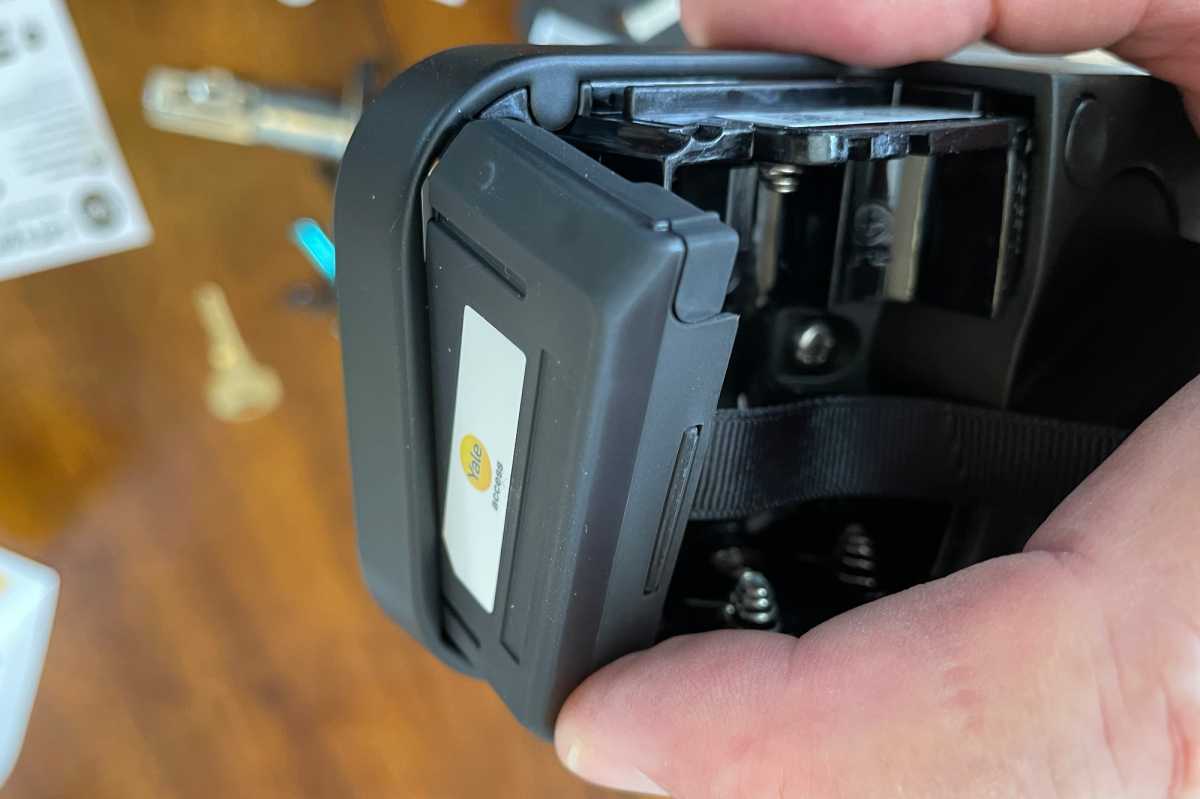
Yale’s Smart Module supplements the lock’s Bluetooth radio with Wi-Fi connectivity (you’ll use both for different purposes). The module is included in the price of this model, but it’s also sold separately as an upgrade to the Bluetooth-only SKU.
Michael Brown/Foundry
There’s a lot to recommend the Yale Assure Lock 2 Touch with Wi-Fi, as I’ll get into shortly. But for Apple users keen on building a smart home around HomeKit, Yale’s product strategy is a bit odd. If Home Key support is on your must-have list, you can only get it with the Bluetooth-only Yale Assure Lock 2 Plus ($210) or the Yale Assure Lock 2 Plus with Wi-Fi ($290, and we’ll have a review of that model soon). Each of those models cost $10 more than their Touch counterparts, but buying either one entails giving up two features found only on the Touch models: the fingerprint reader and the key cylinder that allows you to open the lock with a physical back-up key.
This review is part of TechHive’s in-depth coverage of the best smart locks.
Design & build
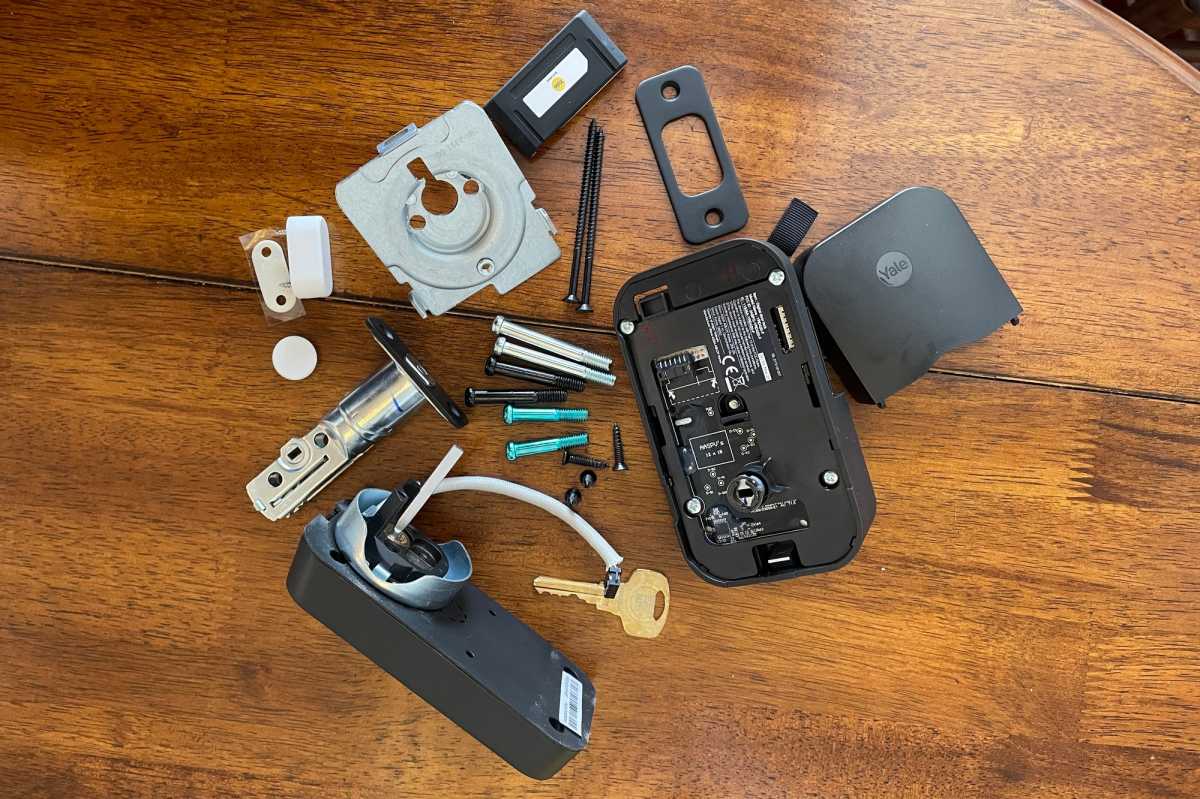
The Yale Assure Lock 2 Touch is much smaller than Yale’s first efforts, but it still has a lot of bits and pieces compared to something like the Level Lock. (You won’t need all those screws, they’re provided for different door thicknesses.)
Michael Brown/Foundry
It’s no Level lock, but the Yale Assure Lock 2 Touch is decidedly smaller than the behemoths I dealt with in my early smart home days. There are three locks in this product family, and it’s one of two that are outfitted with a traditional lock cylinder. Yale considers the key a backup solution, so it provides only one with the lock. You can have copies made. The lock can also be rekeyed if you want to use the same key to open other locks in your home.
Yale rates this lock as an ANSI/BHMA Grade 2 product. There are three grades on that certification scale, with 1 being the highest and 3 the lowest. It can fit on doors measuring 1-3/8 to 2-1/4 inches in thickness and with bore holes of either 1-1/2 or 2-1/8 inches.
The fingerprint reader is cleverly hidden on a circular button with the Yale logo printed on it, and it’s proven to be very accurate at recognizing my family’s fingerprints. Yale says the lock will recognize a fingerprint in less than half a second, and I wouldn’t dispute that claim based on my experience.
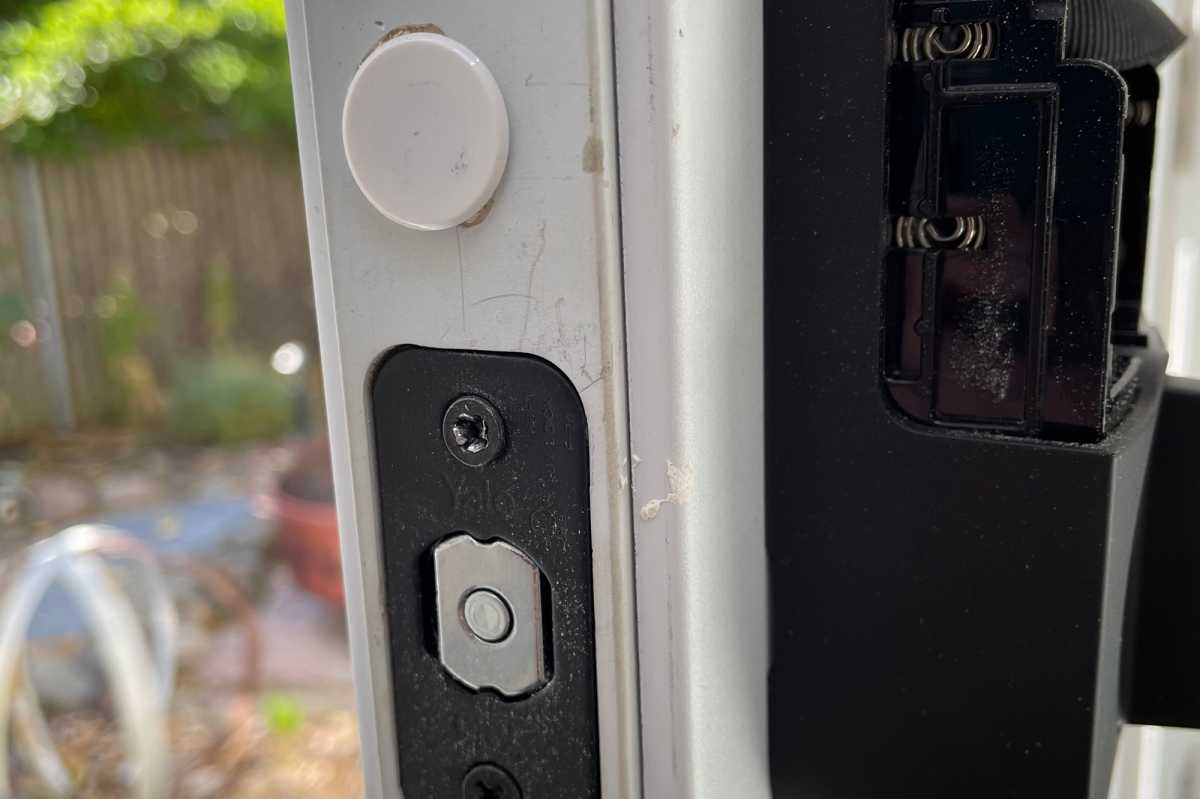
That white dot above the bolt is the cover for an embedded sensor that can detect when the door is closed and when it’s ajar.
Michael Brown/Foundry
The touchscreen numeric keypad only appears after you touch the lock, and a backlight makes the buttons very easy to see—at night. Unfortunately, it’s nearly impossible to make out the numbers in direct sunlight. That’s not a problem if you only ever use the fingerprint reader, but there will be times when you want to grant access to someone else and they’re not there to register their fingerprints.
The interior escutcheon is even smaller, which is a welcome development. Its battery compartment, which hosts four AA batteries, accounts for about half its size, and the thumb turn accounts for most of the rest. There’s a button on the inside if you can’t be bothered to twist the thumb turn to unlock it.

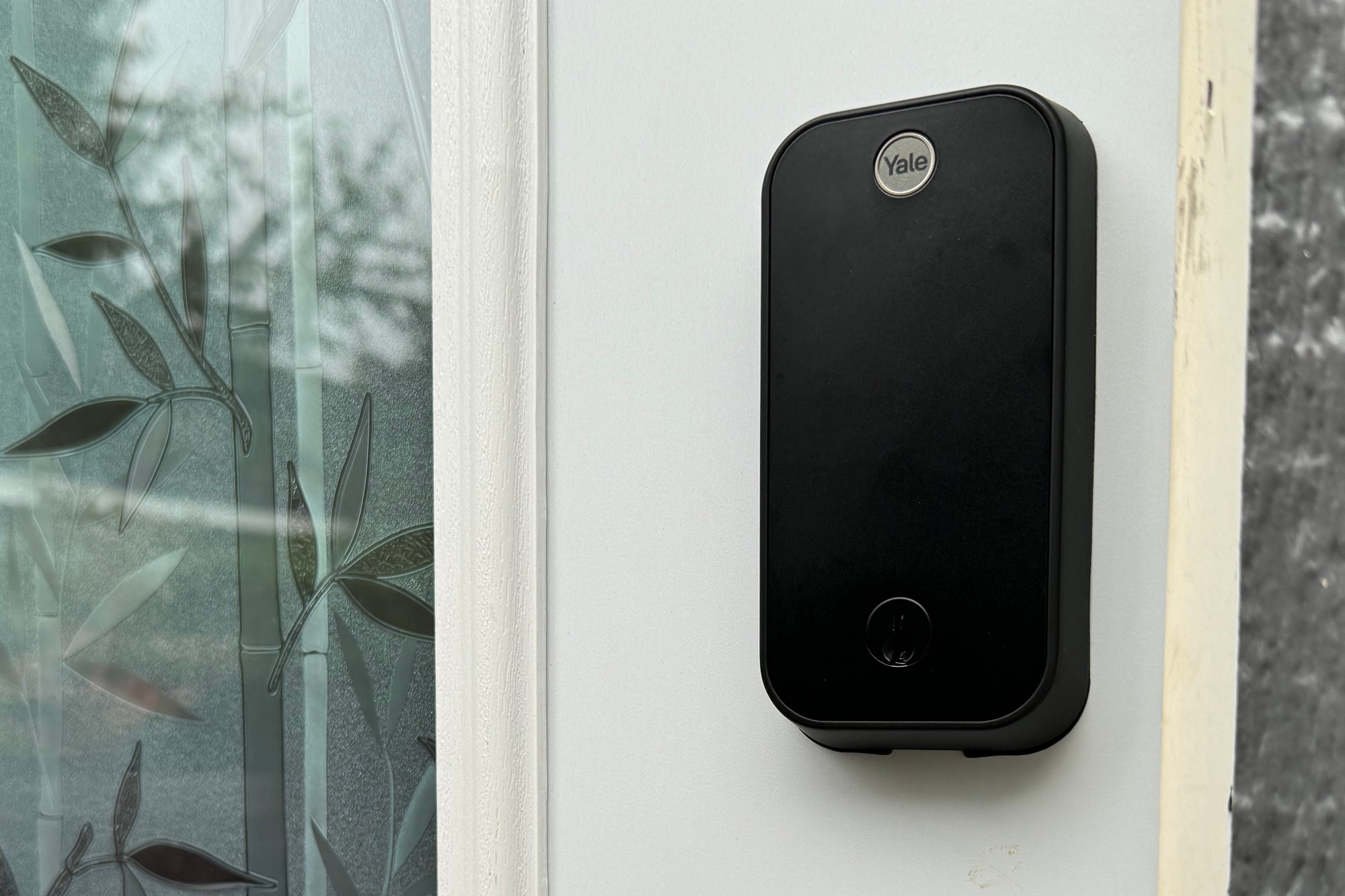 Move the slider above to the right to see what the lock looks once its numeric keypad is activated, but don’t be fooled by this photo. The numbers are all but impossible to make out when the sun is shining directly on the lock. My camera compensated for the lighting, so the second image looks better than reality.
Move the slider above to the right to see what the lock looks once its numeric keypad is activated, but don’t be fooled by this photo. The numbers are all but impossible to make out when the sun is shining directly on the lock. My camera compensated for the lighting, so the second image looks better than reality.
The lock is available in three finishes: Satin Nickel, Oil Rubbed Bronze, and Black Suede. Satin Nickel has been my door hardware finish of choice for many years, but Yale’s Black Suede won me over as soon as I put it on my door. It’s a very pretty matte black.
Installation
The Assure Lock 2 Touch is smaller, but it’s only slightly easier to install than the smart locks of yesteryear. Yale provides an excellent printed user manual and marking templates (for drilling holes if you’re not replacing an existing deadbolt). There’s also a version of the installation manual in the app itself.
Once you’ve inserted the deadbolt itself into the door, there are three components to wrangle: the interior and exterior escutcheons and a mounting plate that secures the interior escutcheon to the door with two long screws. You still need to thread a bundle of wires from the exterior escutcheon through the door and plug it into a socket on its interior counterpart, taking care to align the ridges. But with all three pieces being smaller and lighter, it’s at least easier to hold everything in place during assembly. And there’s only one screw to secure the interior escutcheon to the mounting plate.
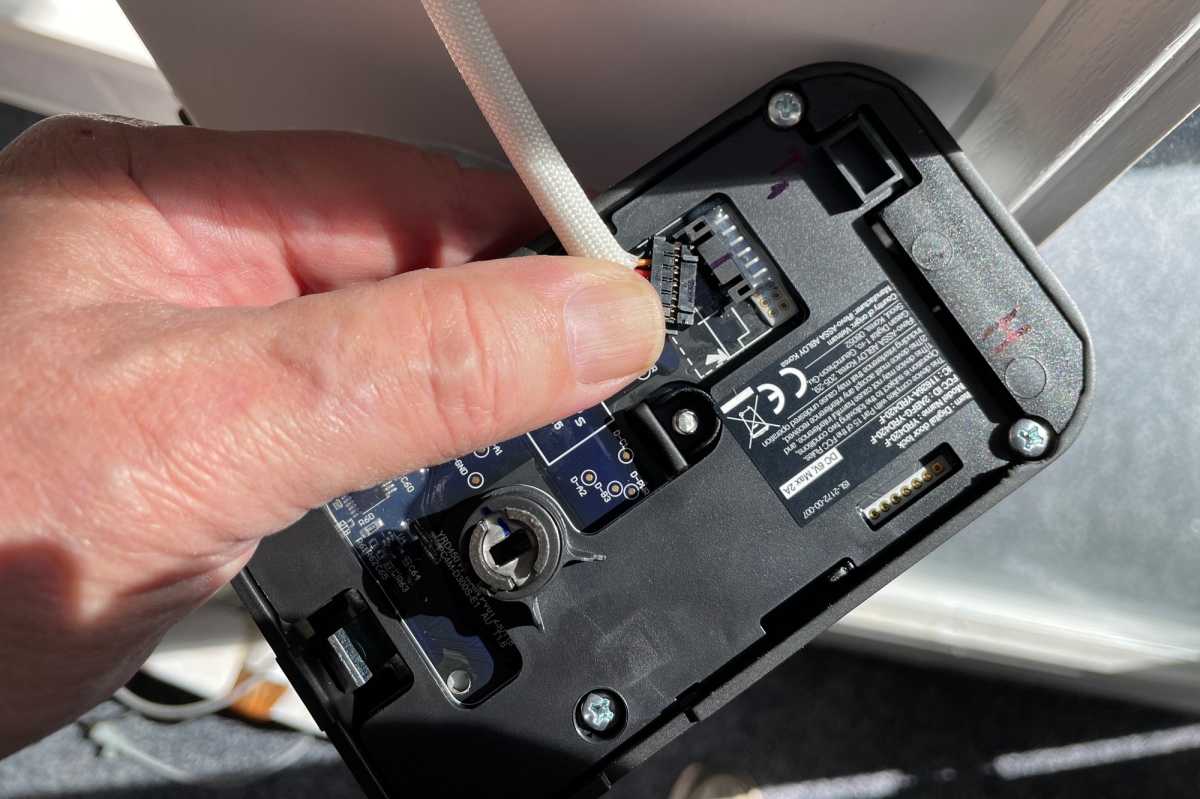
You’ll need to snake this bundle of cables through the door and plug it into a socket on the interior escutcheon.
Michael Brown/Foundry
If you want Wi-Fi access, you’ll then plug Yale’s Smart Module into the socket on top of the interior side of the lock. The next step of physical installation is also optional, but it does add value. Yale includes a magnetic door sensor that can detect if the door is open or closed. It can be either surface mounted or—if you don’t mind drilling a 5/8-inch-wide by 1/2-inch-deep hole in the side of your door—flush mounted. Yale’s app will then log each time the door is opened and closed, and you can also enable a feature that will automatically lock the door after it’s been closed for a user-defined amount of time. The bolt will not slide out if the door is ajar, preventing damage to your door and door frame as well as to the lock itself.
Setting up users
Once you’ve installed the provided four AAA batteries, closed the cover, and paired the lock with Yale’s smartphone app, you’re ready to enroll users, of which there are two classes: Owners and Guests. Owners have full access to lock programming and can invite other users, while Guests can only use a PIN, their fingerprint, or the app to utilize the lock (once someone with Owner status has set them up in the app).
But before you register a user’s fingerprint, know that you can’t restrict that person’s access; they’ll have 24/7 access to your home until you revoke their permission. For users with only PINs, you have the option to grant either recurring access (e.g., every Wednesday between 9:30 a.m. and Noon), or temporary access within a date and time range (e.g., starting on Friday at 4:15 p.m. and ending the following Saturday at 2:00 p.m.). The latter scenario would be useful if you’re running an Airbnb, while the former would provide a convenient way for a cleaning service to come in while you’re away.
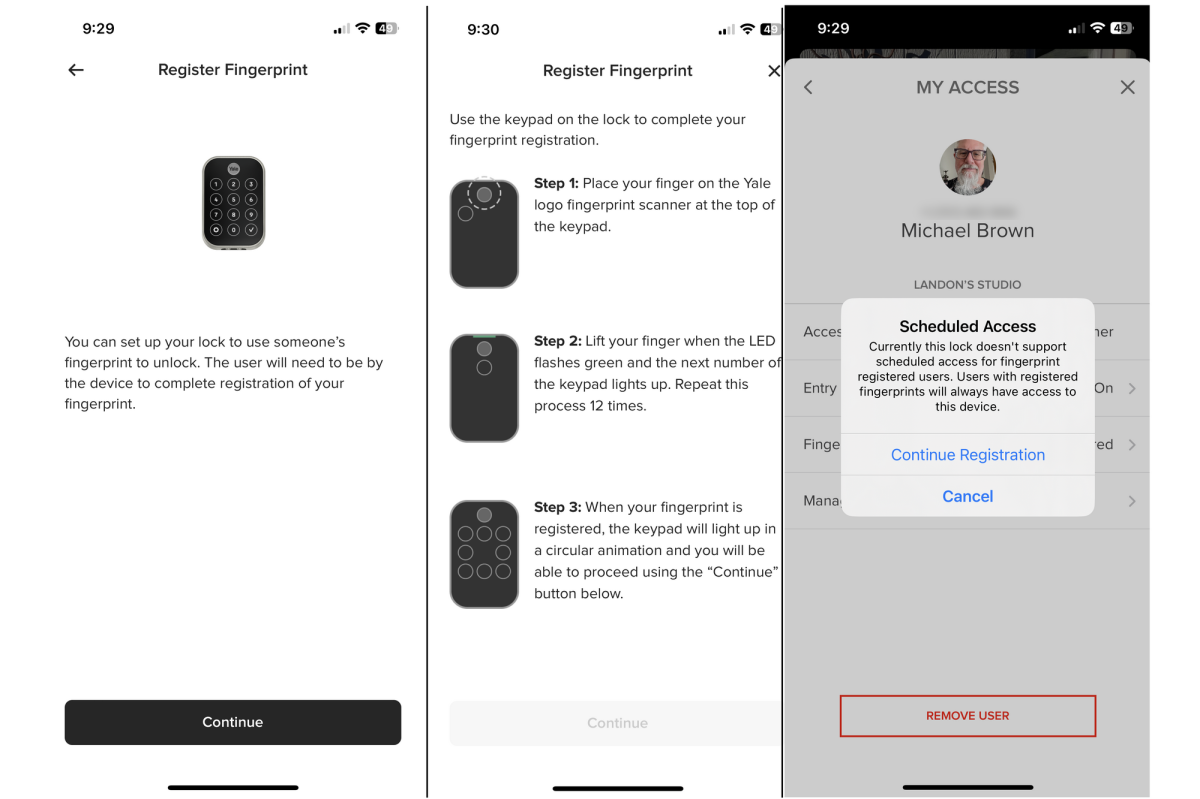
The app makes it easy to enroll fingerprints for up to 20 users, but those people will have 24/7 access to the lock. You can’t restrict access to days and times as you can with users who have only PINs.
Michael Brown/Foundry
As I said earlier, this lock is very quick to recognize a registered fingerprint; programming the prints, on the other hand, takes a while. The lock takes 12 separate impressions for each person (it can log up to 20 sets of prints), and the first time I registered my own, the app took so long to register them after the 12th reading that I thought it had frozen. Fingerprints are stored on the lock itself with 128-bis AES encryption; Yale says they are never uploaded to the cloud.
Performance
I installed the Yale Assure Lock 2 Touch about a week before the lock was officially announced, and Yale quickly fixed a bug I encountered that caused it to repeatedly drop and then re-establish its connection to my Wi-Fi network (apparently there was a conflict with the Eero router in my Ring Alarm Pro system). It has operated smoothly—and quietly—in the weeks since.
Its event-logging system can keep track of when the lock is used, and it can send alerts based on various criteria: when its locked or unlocked manually or by a specific user (provided they use their fingerprint or PIN), when it’s left ajar, when it auto-locks, and so on.
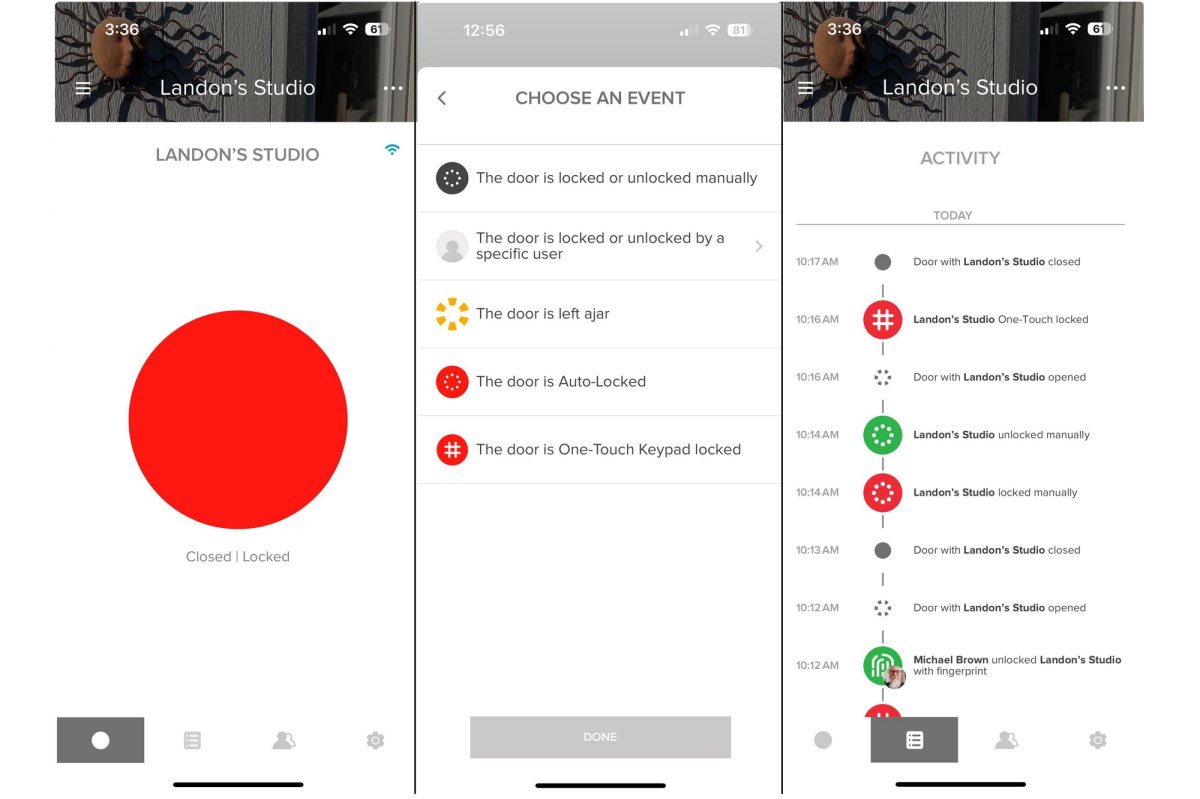
Yale makes it easy to see the status of the lock at any given time, and you can receive notifications for various events. Everything is tracked in a detailed history.
Michael Brown/Foundry
Should you buy the Yale Assure Lock 2 Touch?
The Yale Assure Lock 2 Touch ticks a lot of boxes: broad smart home ecosystem support (with the Wi-Fi module), flexible user access, a fingerprint reader, a physical backup key, a comprehensive logging system, and pretty industrial design. I’d rate this lock considerably higher if I could see its numeric keypad in direct sunlight.
That’s just one shortcoming, and it won’t matter if you just use the fingerprint reader—or use the keypad only at night—but it’s a very big one, nonetheless.
Meanwhile, Apple users who want Apple Home Key support should consider Yale’s other new smart lock, the Assure Lock 2 Plus. But then you won’t get a fingerprint reader or a back-up physical key. And while I haven’t installed that lock quite yet, I won’t be surprised if it has the same problem with its keypad turning invisible in direct sunlight. I’ll update this review as soon as I find out.

